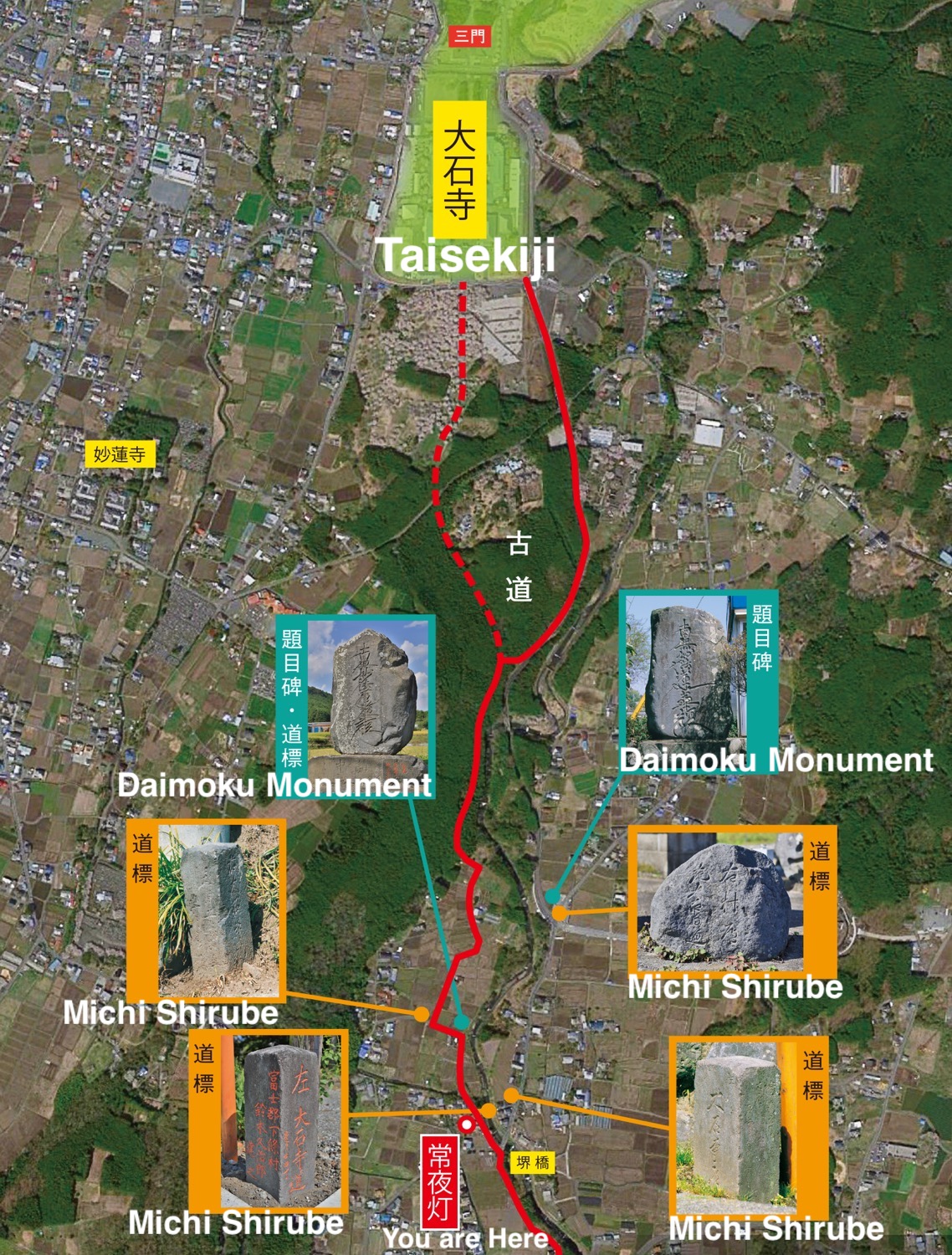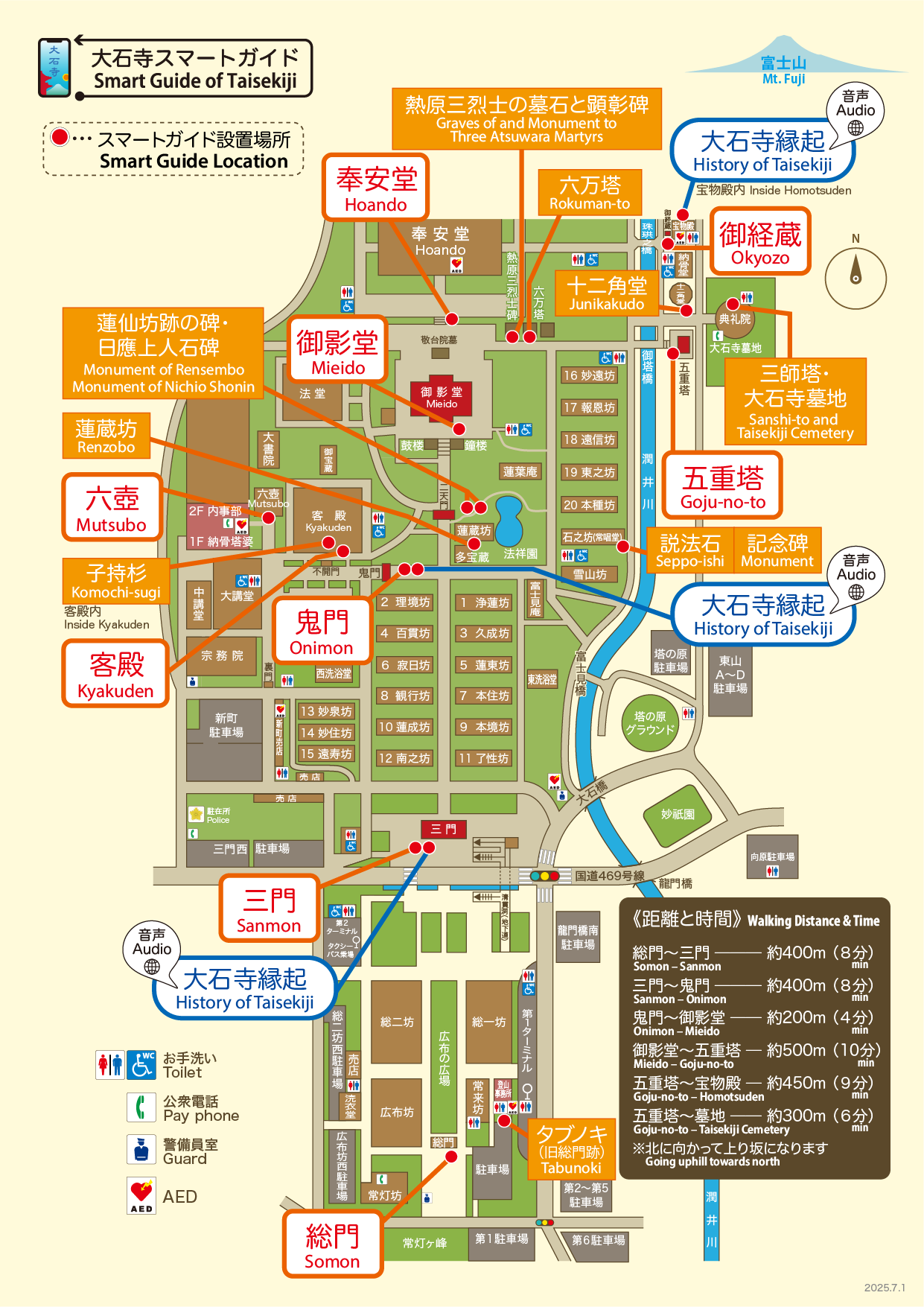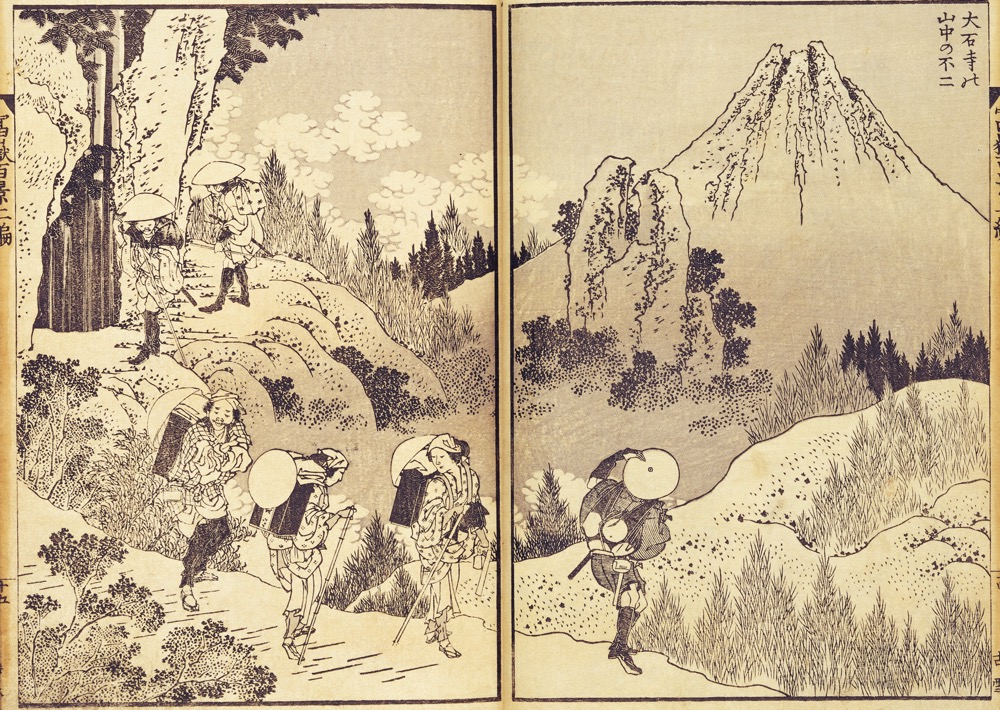
Taisekiji-michi
Joyato & Michi Shirube
(Night Lantern and Stone Signpost
of the Taisekiji Path)
This Joyato, the Night Lantern, is the memorial light to repay the debt of gratitude on the occasion of the 600th anniversary of the passing of our Founder Nichiren Daishonin. It was established in August 1881 by Nippu Shonin, the Fifty-fifth High Priest of the Head Temple.
According to the records, the 600th anniversary of the passing of our Founder Nichiren Daishonin was officiated in the following year, together with the 550th anniversary of the demises of the Second High Priest Nikko Shonin and the Third High Priest Nichimoku Shonin. This memorial ceremony was conducted magnificently for seven days, from August 10th of the lunar calendar with the attendance of many lay believers.
The names of the people who were involved in the establishment of this lantern are carved on the supporting pedestal. “The promoter, Koremura Sampei, from Aoki Village” and “The land donor, Hirose Tsuneuemon” are carved on the north side, as well as “The stone mason, Hatano Sokichi, from Shimmachi, Kamijo Village, Fuji county” on another side of the pedestal.
All the construction expenses were covered by contributions, offered with pure faith, by the lay believers of Head Temple Taisekiji. All the names of 73 persons and one Hokkeko organization that supported the contribution are carved on the south and north sides of the pedestal.
In the Taisho period, a horse-drawn railway called Fuji Kido, started to run. Before then, the way to make a pilgrimage to Head Temple Taisekiji was basically on foot. And the path taken by the visiting believers was called Taisekiji-michi, the Taisekiji Path.
This Aokisaka-shita area was an important junction on the way to Taisekiji from the Tokaido Road. In the past, there was a bridge crossing the Urui-gawa river to the east of the Night Lantern, and the Michi Shirube, the Stone Signposts, are placed at the points at both ends of the bridge.
According to legend, the entire path from the Night Lantern to the Somon Gate of Taisekiji was a stone-paved road.
In the Fugaku Hyakkei (One Hundred Views of Mount Fuji) by Katsushika Hokusai, who was a famous artist in the Edo Period, there is scenery depicted in the picture, “Mt. Fuji as seen from the Mountain of Taisekiji.” It is assumed to be a spot on the way from the Aokisaka-shita area to the Somon Gate. There are still traces scattered throughout the mountains that remind us of those days.
In March 1881, the year the Night Lantern was established, a stone signpost was built by “Suzuki Kyujiro, from Shimojo Village” at the foot of the Lantern. It is engraved, “Left is to the Taisekiji Path, Right is to Umamizuka Village Road,” Considering the existence of two other stone signposts built in the Tempo Era in this area, it is thought that they were remade on the 600th anniversary of the passing of our Founder Nichiren Daishonin. They had an important role in guiding the believers from near and far to Head Temple Taisekiji.
Those stone signposts along the Taisekiji Path were placed at various points around the Head Temple with the faithful believers’ goodwill. However, most of them were lost due to road construction in the Showa Period. Today, nine stone signposts are still found in Fujinomiya City, and three of them remain in this area.
There is a stone monument engraved with the Daimoku by Nippu Shonin 200 meters north of the Night Lantern . It was built by “Hirose Yojuro” and some other sponsors in October 1881. The instructions on how to go to Taisekiji are inscribed on the base of this Daimoku Monument, so it had played the role of a signpost in the past.
It is clear that the series of these construction projects, such as building the Night Lantern, the stone signposts, and the Daimoku monument were commemorative projects in conjunction with the 600th anniversary of the passing of our Founder Nichiren Daishonin.
Until the beginning of the Showa Period, the neighborhood residents took turns lighting the Night Lantern every evening, so the light was shining every night. Furthermore, it is said that the Hirose family, who lived in front of the Night Lantern, opened a tea stall and warmly welcomed the believers who had made the long journey to Taisekiji. Although the Night Lantern originally was located along the river on the opposite side of the road from here, on March 26, 2014, it was moved to this location and renovated by Nichinyo Shonin, the Sixty-eighth High Priest of Nichiren Shoshu Head Temple, with the understanding and cooperation of the local residents. This was carried out in conjunction with a road widening project by Fujinomiya City.
The Night Lantern was not merely a light to illuminate the way to Head Temple Taisekiji for the believers from all over Japan, but also it signifies “the offered light” to the Three Treasures. Etched on the front side of the light are the words “In front of the Gohonzon.” This is also proof that the route leading from the Night Lantern to the Head Temple was used as “the Pilgrimage Path to Taisekiji.”
It is nothing short of miraculous that the Night Lantern has not collapsed but has maintained its present imposing appearance, despite numerous earthquakes and disasters during the turbulent history since it was established.
Joyato, the Night Lantern, and Michishirube, the Stone Signpost are valuable historical legacies that should be passed down to future generations not only in Nichiren Shoshu, but also in the local community.
We would like to express our deepest respect to the great predecessors and current residents of this area who have protected these historical sites of Nichiren Shoshu for so many years.
Taisekiji Path from Joyato

Smart Guide of Taisekiji precinct

日蓮正宗 総本山 大 石 寺
Taisekiji
Nichiren Shoshu Head Temple
©2024 All rights reserved





